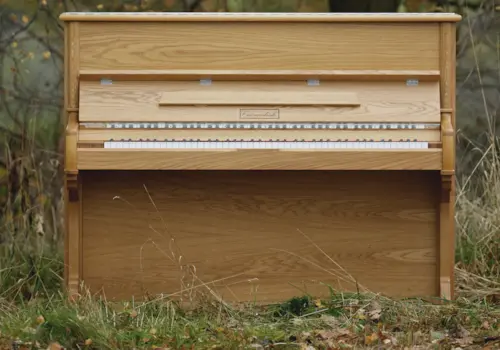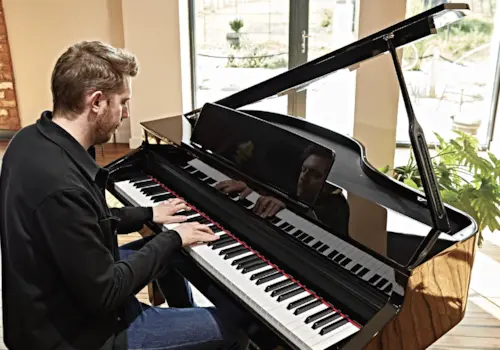14 August 2017
|
In answer to a reader's question, Pianist contributor Graham Fitch addresses this complex piano-playing subject.
On the Letters page of Pianist 96, Trish Meyer observed that many teaching books and editions publish fingering suggestions, which can be useful, depending on the size, shape and reach of your hand. However, many other editions of music omit fingering, and she wondered how pianists can work out good fingerings for themselves. The short answer is that there can be no standard fingering, no matter whether the fingering you are using is from an editor, a teacher or from the composer himself.
Now for the long answer! The only correct fingering is the one that works for your hand – given its size, the length of one finger in proportion to the others, your span, physique and so forth – and what you want to do with a particular passage in terms of articulation. In other words, there are very many different possibilities for fingering. When people purchase an expensive Urtext edition, they assume that all the markings are somehow gospel, including fingerings. In fact, the fingerings are the work of a specialist editor who has been given the impossible task of writing for the average hand. Trusting a printed fingering implicitly is like going into a department store to buy a jacket to find they only have one size. Forget male or female; small, medium or large – one size must fit all, no matter your age or physical proportions.
I recommend spending a bit of time on the process of organising a fingering that suits your hand right at the beginning stages of learning a new piece, with a pencil and an eraser very close by. Try the printed fingering (if present) and give it a mental mark out of 10 for comfort and security, based on what you might want to do with each phrase (articulation, touch, shaping, timings, etc.). Set this deliberately aside and generate another possible fingering without prejudice, marking it again out of 10 on the same grounds. Jot down salient finger numbers lightly in the score if you think you might not remember them. Generate a few more fingerings, and then make a final decision – writing the fingering in your score. As you practise the fingering, leave a small window of time to change your mind in case a new and better fingering leaps out at you, but after a day or so commit to this fingering and stick to it every time you practise thereafter until it becomes automatic (meaning you can play without any conscious thought). This allows you to concentrate on other aspects of music making and performance, knowing and trusting that your fingers will go where they need to go without your having to think about it.
Try out different editions – try our editor’s suggestions, for example, then try another edition. Fiddle for a while until you come up with something that works for your hand. Don’t take anything at face value and feel free to come up with something that is entirely your own. And don’t discard otherwise ‘bad’ editions when it comes to the fingering suggestions – we should steer clear of Czerny’s Bach editions (because he ‘corrected’ the text and added his own contributions) but some of his fingering is great.
There are a few books on piano fingering I can recommend. Tobias Matthay wrote a small book Principles of Fingering and Laws of Pedalling (1908). Penelope Roskell’s The Art of Piano Fingering (1992) is a new approach to scales and arpeggios and challenges the rules that have been passed down by tradition. Alternative fingerings are given in addition to standard ones, and there are plenty of examples from the repertoire too. Rami Bar-Niv’s The Art of Piano Fingering (2013) teaches the craft of piano fingering using music examples, photos and diagrams, exercises, and injury-free techniques. There is also Jon Verbalis’ Natural Fingering: A Topographical Approach to Pianism (2012). All the modern volumes are readily available online.
Would you like more help with fingering? If so, write to the editor.








